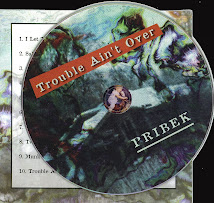* CLICK HERE FIRST *
BBC News - Human brain's 'bat sight' found: "Increased activity in the calcarine cortex was discovered."
Retrieved by Pat Darnell | May 31, 2011 | Bryan TX
Consider the brain in your own head. Go on, try to think about it as the most crazy, crawdad, living saw-daddy.... your whole body is a caddy ... for your brain. Is it starting to zizzz you out? It does me. Your brain doesn't contract and expand like the heart and lungs; it just sits up there and delegates. It takes in stimulus from eyes, ears, mouth, hands, nose ... and makes sense of it all.
Now consider blind people. They can learn to "see" by using clicking sounds that bounce back to their good functioning ears: it is called echo-location, just like bats do. And with fMRI researchers found: "Increased activity in the calcarine cortex was discovered."
BBC reported that: "Dr Lore Thaler, from University of Western Ontario, said: "This suggests that visual brain areas play an important role for echolocation in blind people." (Read entire article SOURCE)
So, again with the Brain Slices -- you should be getting used to it by now -- anyway you slice it, you will be engrossed in Brain Industries for the rest of your life.
Dissection of Visual Pathway, Inferior View
- Optic nerve
- Optic chiasma
- Optic tract
- Lateral geniculate body
- Medial geniculate body
- Optic radiation
- Calcarine cortex
- Lentiform nucleus
- Caudate nucleus
- Interpeduncular fossa
- Cerebral aqueduct (SOURCE)
The sensory homunculus is the topographical representation of body parts on the brain. In the figure one can see that the hands have a disproportionately large representation compare to the eyes with respect to sensation but the perception of vision of course is in area 17 of the calcarine cortex. (SOURCE of Cool Slice; 2nd Picture)
Macular fibers are represented more posteriorly in the calcarine cortex whereas nasal fibers are projected more anteriorly. The individual fibers can be related to the visual field and its representation on the calcarine cortex. In the figure it is evident that the projection from nasal retinal fibers ... project to the contralateral anterior calcarine cortex with synapses in the lateral geniculate body. The left side of the brain views the right visual field and the images are projected as upright compared to the visual field.
*
*
(Echolocation in bats: SOURCE)" ... Using echolocation, bats can detect objects has thin as a human hair in complete darkness. Echolocation allows bats to find insects the size of mosquitoes, which many bats like to eat."
*
*
*























































